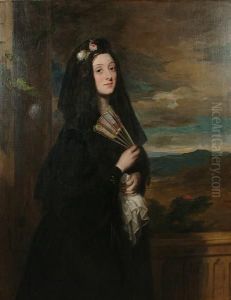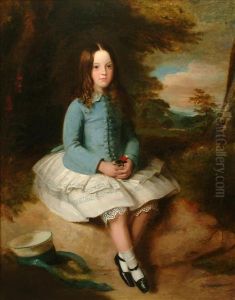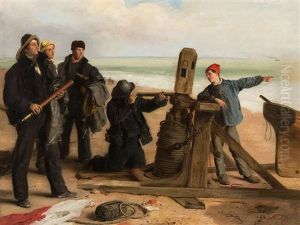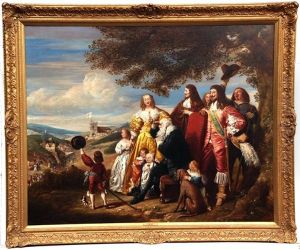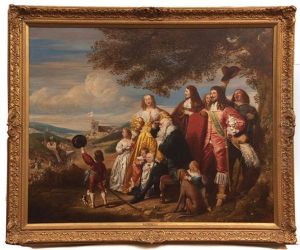John Hollins Paintings
John Hollins was an English portrait painter born in 1793 in Cradley, Worcestershire. His life and work spanned the Georgian and early Victorian eras, a period of significant transformation in British art, society, and culture. Hollins, primarily self-taught in his early years, later moved to London to further his education and career in art. His dedication and talent soon earned him recognition among his peers and the public.
Hollins was known for his remarkable skill in capturing the likeness and personality of his sitters. His portraits are characterized by their detailed realism, delicate brushwork, and thoughtful composition. Throughout his career, he painted many notable figures of his time, including scientists, politicians, and members of the literary world. This not only contributed to his fame but also provided a valuable visual record of prominent individuals of the 19th century.
His contribution to the art world was recognized by his election as an Associate of the Royal Academy in 1836, a prestigious honor that acknowledged his talent and impact on the British art scene. Despite his success, Hollins remained dedicated to his craft, continuously refining his technique and exploring the nuances of portrait painting.
John Hollins died in 1855, leaving behind a legacy of work that continues to be appreciated for its historical significance and artistic merit. His portraits are held in various public and private collections, testament to his skill and the timeless appeal of his artistry. Hollins' life and work provide insight into the evolution of portrait painting in the 19th century and his portraits serve as a window into the era's cultural and social landscape.
